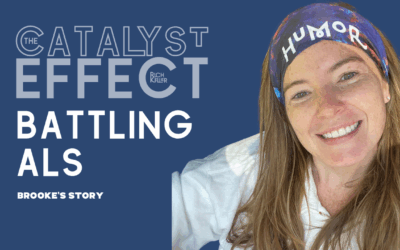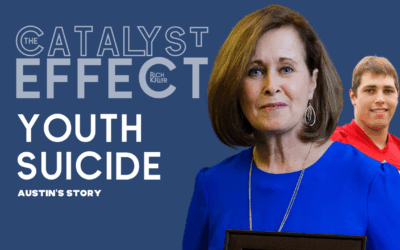Episode 46
Sesame Street
What does it mean to be a brand?
One of the most critical barriers to success is understanding what a brand is and what a brand is NOT. I get this question all the time. Let me tell you what a brand is NOT: A brand is NOT a name, logo, tag-line, package design or the product itself. I call these elements: Window-dressing your brand. A brand is simply an EMOTIONAL IDENTITY that differentiates products, services and people.
As a former marketing executive at global multi-billion dollar consumer products companies like Nabisco, Kraft Foods, Cadbury and Godiva, I successfully crafted emotional identities for some of the world’s most iconic brands. Over the course of 25 years, a frequent challenge I faced was communicating the role a brand played in consumer’s lives…in other words its Core Value. To solve this problem, I developed a process to label that brand’s Core Value using just ‘One Word’. This helps consumers understand what they are actually buying.
During this series, I will select a brand I worked on or studied and share it’s ‘One Word’ Core Value, as well as share valuable topics in the branding arena that will help you Stand-Out Conquer Obstacles and Reach Excellence…in other words, SCORE.
So let’s turn to today’s brand clip…I’ll give you a hint:
Think Tickle Me Elmo, the doll that triggered riots at stores during the 1996 Christmas season!
Show Notes (click to expand)
Before the reveal, I’d like to say that I believe brands that know their PURPOSE – their “WHY” as Simon Sinek likes to say – stand the test of time and become icons. I’ve done episodes on quite a few of these brands – Starbucks, SPANX, Apple, Ben & Jerry’s and Oreo to name a few!
Well the next “ICONIC” brand I’m sharing today is Sesame Street. Since its start in 1969, Sesame Street has remained extremely relevant because the brand’s purpose is at the heart of everything they do: To help children become better prepared for school…AND life with a TV show that reaches 150 million children across the globe. Today there are more than 150 versions of the show being produced in 70 languages.
Sesame Street was unlike anything kids had seen on TV before, with its brownstone stoop set, complete with graffiti and garbage cans under the front windows – all designed to look familiar to inner-city kids. Add to this its mixed-race cast, which at first, was not universally accepted. For example, in 1970, Sesame Street got banned for a month in Mississippi because of its ahead-of-its-time diversity.
Since my childhood, Sesame Street has been teaching kids problem solving skills and life lessons, all while singing some unforgettable song lyrics, like some of my favorites that I will sing, “Sunny Days Sweeping The Clouds Away” or “Rubber duckie you’re the one, you make bath time lots of fun.”
Kids have loads of fun with the silly Muppets characters they relate to (created by Jim Henson by the way) like Bert, Ernie, Oscar, Big Bird, Kermit the Frog and the diva herself Miss Piggy, to name a few!
Sesame Street has featured some amazing pop-culture icons along the way, like John Legend, Sarah Jessica Parker, Tina Fey, Adam Sandler, Lin Manuel Miranda and Beyonce!
“Sesame Street has always been real-world,” says Sherrie Westin, President of Sesame Workshop, the nonprofit educational organization behind the Sesame Street brand. Sherrie also shared the following:
“It’s not a fantasy, it’s not a fairy tale. One of the things that sets Sesame Street apart is respecting children and dealing with real-world issues from a child’s perspective.”
For example, when the actor who played the shopkeeper Mr. Hooper died in 1982, Sesame Street chose to address his death head-on. When Big Bird asked the grownups on the show where he went, they explained that he was gone forever, but it would be okay.
Sesame Street has also found ways for its Muppets characters to help guide children through challenging situations. This led to many new characters over the years joining the (quote-unquote) party. There’s:
Kami, an HIV-positive Muppet.
The brother, sister Muppets duo Zari and Zeerak who promote gender equity in Afghanistan.
Lily, the first homeless Muppet, who explains that she does not always have enough food and must go to the food pantry with her family.
Alex, a Muppet whose father is in prison, and that makes him feel sad, angry, and ashamed.
Rosita, the first Muppet of Hispanic descent.
AND
Julia, the first Muppet on the autism scale.
What makes Sesame Street so special is that everyone is accepted exactly as they are. The brand has always shown that differences should not only be accepted, but also embraced. No one on Sesame Street is ever alienated.
While Elmo and Oscar have helped millions of preschoolers master their 1-2-3s and ABCs, these friendly, furry monsters also promoted the idea of building healthy bodies in addition to healthy minds, a response to the child obesity crisis in America.
Even Cookie Monster had to confess that his favorite chocolate chip treats were only a “sometimes” food, thereby encouraging kids to practice healthy eating and moderation:
For example, in a 2012 episode, Cookie Monster is offered carrots to eat while waiting for a batch of cookies to finish baking. CARROTS – OH BOY! Mario Lopez comes storming in as a news reporter, claiming that Cookie has become the “Veggie Monster”. Cookie sings “Me Am What Me Am” to explain that he’s still Cookie Monster, even though he does eat vegetables.
Although Sesame Street continually evolves to reflect what is currently happening across the globe, the lessons of math, reading, life skills, diversity and above all, embracing INCLUSIVITY are areas where Sesame Street has remained consistent over five decades.
We live in a world where everyone deserves to be valued. This is why embracing diversity and being INCLUSIVE is the one area where Sesame Street has always excelled.
Sherrie Westin, said the following:
“Sesame Street has a long history of using the power of media, storytelling, and Muppets to not only provide quality early education to many who don’t have access, but also to model behaviors and change hearts, minds, and social norms.”
Sesame Street has successfully mastered the courage to tackle the most uncomfortable issues kids will face as they grow up. In my opinion, kids don’t even realize they’re experiencing these “learning” moments…and that’s largely due to the extraordinary magic of the Muppets Characters themselves. They’re lovable, huggable and enjoyable creatures that know how to drive the emotional connection needed to make life’s challenges easier to handle.
I’ll sum the brand up this way! Using entertainment, Sesame Street drives INCLUSIVITY by keeping up with the educational, social, and cultural challenges of its young audience!
If there’s one thing I know for sure, it’s this:
Your product is NOT your brand.
Your brand is your Core Value…AND
You use your product as the vehicle to drive your Core Value.
Sesame Street uses their TV Show to drive their Core Value of INCLUSIVITY.
So the next time someone asks you, “Can You Tell Me How to Get How To Get To Sesame Street?”, remember this:
INCLUSIVITY is how Sesame Street SCORES!
I’m Rich Keller, The CATALYST and see you next time on The CATALYST Effect!

Listen & Subscribe on
Select an episode
To Discover Their 'One Word'
Join my

and Never Miss an Episode
Join my

and Never Miss
an Episode
Share this episode
[sharethis-inline-buttons]




0 Comments